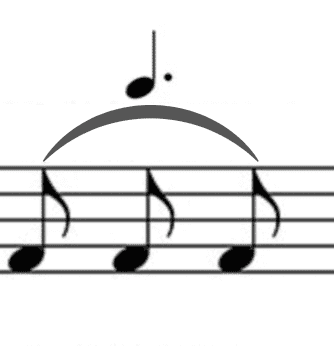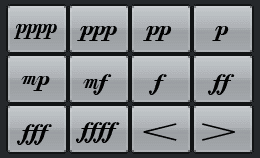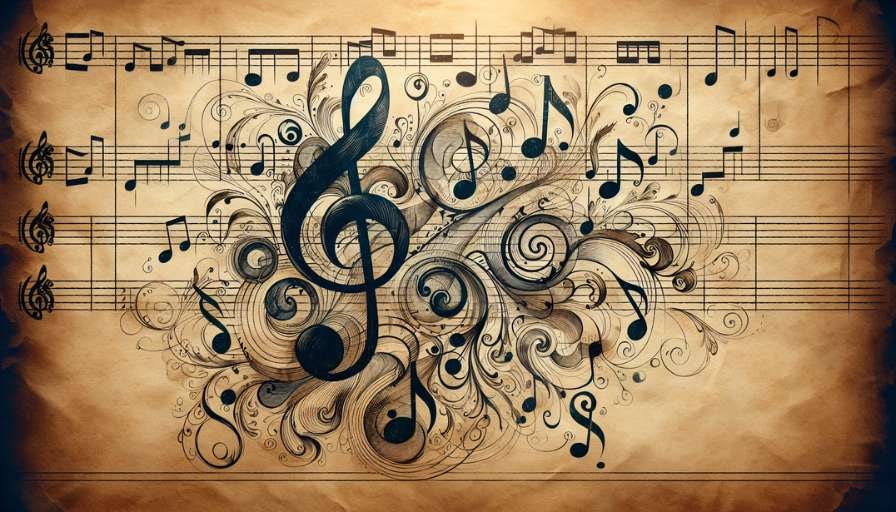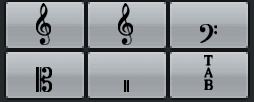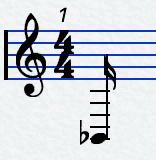Are you eager to uncover the logic behind captivating melodies and impactful chords? Music theory serves as your guide, directing how to transform raw sound into an artistic expression. This guide delves into the essentials of music theory, from the basic musical alphabet to intricate harmonic structures.
Whether you aim to compose, play, or simply better understand music, you’re in the right place.
Join in as we demystify scales, chords, and rhythms, empowering your musical journey with a deep understanding of musical scales. Developing aural skills is also crucial for mastering these concepts.
Additionally, we will explore musical notation as a key concept that will be covered in this guide.
Key Takeaways
- The fundamentals of Western Music Theory include the musical alphabet, musical scales, musical intervals, keys, chord progressions, and tonal harmony, providing a structured framework that guides the composition and interpretation of music.
- Rhythm is a crucial element of music expressed through patterns, time signatures, and dynamics, influencing the mood and emotional journey of the listener.
- Music Notation is a universal language that represents music visually, enabling musicians to compose, learn, and perform music across a range of styles and traditions.
- Aural skills are essential for understanding and applying music theory effectively.
Table Of Contents
Exploring the Foundations of Western Music Theory
– The Musical Alphabet: A to G and Beyond
– Scales and Keys: The Building Blocks of Melody
– Harmony and Chord Progressions: Creating Cohesion in Music
The Rhythm Section: Pulsing Through Music
– How Many Beats? Understanding Time Signatures
– Syncopation and Rhythmic Patterns
Creating Melodies: The Art of Musical Storytelling
– Melodic Motion and Phrasing
– Utilizing Intervals in Melody Construction
– From Simple Triads to Complex Chord Progressions
– Major and Minor Chords
– Extended Chords and Colorful Harmonies
The Role of Dynamics and Texture in Music
– Controlling Volume: The Impact of Dynamics
– Textural Richness: Blending Sounds for Effect
Music Notation: The Language of Musicians
– Reading Sheet Music: Deciphering the Symbols
– Translating Notation to Sound: Playing What You See
Contextualizing Music Theory: Culture and History
– Musical Modes and Their Cultural Significance
– The Evolution of Harmony: From Gregorian Chants to Jazz
Summary
FAQ
Exploring the Foundations of Western Music Theory
The language of musical ideas may seem challenging to grasp at first, but it becomes much simpler when broken down into its basic elements. Indeed, the foundations of Western music encompass elements such as the musical alphabet, musical intervals, musical scales, and keys, which serve as the building blocks for creating melodies and harmonies.
This understanding of music theory provides musicians with a roadmap to navigate the world of music, guiding the construction of musical compositions and shaping the interpretation of musical forms. Tonal harmony is a key aspect of understanding music theory, playing a crucial role in creating and interpreting music. It helps in establishing the structure and emotional impact of a piece, making it essential for both composers and performers.
This roadmap is not just a guide for creating music, but also a tool to interpret music. By understanding music theory, musicians gain the ability to:
- Analyze and dissect musical pieces
- Offer a deeper understanding of a song’s melody, harmony, and rhythm
- Break down and understand every musical piece, from the simplest folk song to the most complex symphony
Through the lens of music theory, you can learn music theory and gain a deeper understanding of the art, including its musical form, even if you’re aspiring to become one of the music producers.
The Musical Alphabet: A to G and Beyond
The first step in learning music theory is understanding the musical alphabet. This foundational element of Western music comprises the first seven letters of the alphabet: A, B, C, D, E, F, and G. The natural notes refer to the white keys on a piano. They are the fundamental building blocks of the musical scale. However, music goes beyond these seven notes. The musical alphabet also helps in understanding musical intervals, which are the distances between notes.
To create a full range of sounds, the musical alphabet includes modifications of these natural notes, known as sharps (#) and flats (b), or accidentals. These additions create a total of 12 unique pitches in Western music. These twelve notes, when played in succession, form what is known as the chromatic scale. The chromatic scale is a cornerstone of Western music, and understanding it is crucial for any aspiring musician.
Additionally, some of these pitches can be referred to by different names, known as enharmonic equivalents. For example, C# and Db are enharmonic equivalents, meaning they are different names for the same pitch. Enharmonic equivalents are essential in various musical contexts, such as key changes and modulation.
What Should I Remember: natural notes, musical scale, musical intervals, accidentals, chromatic scale, enharmonic equivalents
Scales and Keys: The Building Blocks of Melody
Once we have understood the musical alphabet, we can explore the structure of music, specifically scales and keys. In the context of music, a scale is a series of notes played in ascending or descending order. Each scale provides a framework for both the melody and harmony of a piece of music, with the major scale, also known as the Ionian mode, being the most important in Western music. The diatonic scale, which includes both major and minor scales, is fundamental in Western music as it forms the basis for much of its harmonic structure. Musical intervals, the distances between notes, play a crucial role in defining the unique sound of each scale.
A key, on the other hand, serves as the tonal center of a piece of music. It dictates the scale from which the melody and harmony are derived, and indicates which notes are sharp or flat within that scale. By aligning with the emotional expression of a song, different keys can convey distinct emotions, adding depth and richness to the music.
What Should I Remember: Scales, Diatonic Scales, Major Scale (Ionian Mode) and Minor Scales
Harmony and Chord Progressions: Creating Cohesion in Music
While melody is the prominent voice that captures our attention in music, harmony is the landscape that supports and enriches it. When multiple notes or voices play together at the same time, it creates a cohesive sound known as harmony, often defined by musical intervals. This blending of musical elements adds depth and richness to the overall composition. It is primarily expressed through chords and chord progressions, which are sequences of chords following a particular order defined by the key of the piece.
Harmony is not only used to enrich the melody but also to evoke specific emotions. Just as a painter uses different colors to convey feelings and moods, a musician uses chords and chord progressions to create emotional narratives within the music. Whether it’s the joy of a major chord or the melancholy of a minor one, the power of harmony lies in its ability to make us feel. Voice leading is used to create smooth transitions between chords in a progression, ensuring that each note flows naturally to the next. This technique minimizes the movement between notes, making the progression sound more connected and cohesive.
What Should I Remember: Melody and Harmony
The Rhythm Section: Pulsing Through Music
The rhythm of a piece is the invisible thread that weaves together all the musical elements, shaping the flow and groove of a song. It expresses itself through regular, repetitive sound patterns, providing structure by setting the tempo and organizing the sounds, silences, and emphasis in music. Additionally, rhythm interacts with musical scales and musical intervals to create complex and engaging patterns that enhance the overall musical experience.
Rhythm is also a powerful tool for communicating emotion. The tempo, or speed of the beats, can dramatically influence the mood of a piece. A fast tempo can create a sense of excitement or urgency, while a slow tempo can convey a feeling of calm or sadness. Polyrhythm involves the simultaneous use of two or more conflicting rhythms, adding layers of complexity and enriching the overall musical experience. This technique allows for intricate rhythmic interplay, making the music more dynamic and engaging. By controlling the rhythm, musicians can guide the emotional journey of the listener, making rhythm an essential aspect of music production.
Check Everything You Need to Know About the Production of Music
How Many Beats? Understanding Time Signatures
In music notation, time signatures are used to define the rhythmic structure of a piece. They indicate the number of beats in each measure and the note value that gets one beat. These signatures are represented on sheet music as a pair of numbers that look like a fraction (3/4, 4/4, 5/4, 7/8); the upper number denotes the number of beats per measure, and the lower number indicates the note value that gets one beat. Musical intervals also play a role in shaping the rhythmic structure by determining the spacing between notes within the time signature.
Time signatures can be categorized into simple time, compound time, and complex time, each corresponding to a different rhythmic structure. Compound meter differs from simple time in that each beat is divided into three equal parts instead of two. This means that in a compound meter, the beat is typically a dotted note, which is divided into three smaller notes.
For instance, the most prevalent time signature in Western music is the 4/4 time, also termed ‘common time’. In 4/4 time, the first beat of the measure is the strongest, creating a distinct rhythmic feel that is fundamental to many musical styles.
What Should I Remember: time signature, simple time, compound time, and complex time, common time
Syncopation and Rhythmic Patterns
While time signatures provide the basic framework for rhythm, additional techniques such as syncopation can be used to create more complex and interesting rhythmic patterns. Syncopation involves placing emphasis on beats that are traditionally weak, resulting in a rhythm that feels off-beat or unexpected. Cross-rhythm involves the use of conflicting rhythmic patterns, creating a layered and intricate effect in the music. This technique often features different rhythms played simultaneously, adding depth and complexity. Musical intervals can also be used to create complex rhythmic patterns by varying the timing between notes.
Syncopation adds a sense of surprise and excitement to music, making it a popular technique in many forms of music, including:
- jazz, blues
- pop, rock
- soca, dancehall, reggaeton
Soca Loop From Splice
By challenging our expectations of where the beat should be, syncopation keeps the music fresh and engaging, underscoring the power of rhythm in shaping our musical experience.
Creating Melodies: The Art of Musical Storytelling
A melody is formed by a sequence of notes and is typically the most memorable part of a song due to its musical phrase. They are the stories that songs tell, the lines that we hum and the tunes that we can’t get out of our heads. But melodies do more than just catch our ears; they have the power to express emotions and tell stories, acting much like human speech patterns where joy is expressed with quick-paced and diverse tones, and sadness with slower and monotone sounds. Musical scales and musical intervals are fundamental in crafting these melodies, providing the framework and relationships between notes that define the melody’s character.
Creating a strong melody involves more than just stringing together a series of notes. The pitch and duration of the notes can completely transform the character of the melody. A ‘motif’ is a short musical idea that can be developed and varied throughout a piece. It serves as a foundational element that composers can manipulate to create thematic unity and variation within a composition. Even if two songs share the same chord progression, their melodies can be entirely distinctive, adding to the uniqueness of each musical piece.
Melodic Motion and Phrasing
Melodies are not static but have motion, moving from one note to another to create a sense of progression. This movement is categorized as either conjunct or disjunct. Conjunct motion involves moving between notes stepwise, typically creating a sense of smoothness in a melody. Musical intervals play a crucial role in this process, as they determine the distance between notes and influence the overall melodic motion.
On the other hand, disjunct motion consists of larger leaps between intervals and can contribute excitement or emphasis to a melody. It often used in the choruses of Western popular music, where the melody tends to be more dramatic and memorable. The interplay between conjunct and disjunct motion is a key aspect of melodic design, shaping the flow and feel of the melody. Additionally, counterpoint involves the interaction of multiple melodic lines and is fundamental in Western music, adding complexity and depth to the composition. This technique allows composers to weave independent melodies together, creating intricate and harmonious textures.
What Should I Remember: conjunct or disjunct movements, counterpoint
Utilizing Intervals in Melody Construction
Musical intervals play a crucial role in melody construction. They define the pitch distance between notes and contribute to the stability and musical tension within a melodic line. Intervals are described by number and prefix indicating distance and quality, respectively, with the five qualities used to describe intervals being:
- Major
- Minor
- Perfect
- Augmented
- Diminished
The choice of intervals, whether consonant or dissonant, influences the stability and musical tension within a melodic line. A melody using mainly consonant intervals will sound stable and pleasing, while one using dissonant intervals will sound unstable and tense. By understanding the roles and effects of intervals, musicians can manipulate them to create melodies that recall specific emotions and moods. Additionally, ‘melodic contour‘ refers to the overall shape and direction of a melody, which is shaped by the sequence of intervals used.
Harmonic Exploration: From Simple Triads to Complex Chord Progressions
While melodies are the voice of a song, harmonies are its heart. They are a combination of two or more notes played at the same time, forming chords that provide the harmonious foundation that supports the melody. Chords serve as the harmonious foundation that supports the melody and when combined into progressions, they recall specific emotions and guide the listener through the musical piece. Musical intervals play a crucial role in harmonic exploration by defining the distance between notes, which helps in creating varied and rich harmonies.
Harmony in music is vast and diverse, ranging from simple triads to complex chord progressions. As musicians explore and innovate with harmonic progressions, they use the framework provided by music theory to construct chords and progressions that express their creative ideas and resonate with listeners. Harmonic rhythm refers to the timing of chord changes and significantly impacts the overall feel of the music, adding another layer to the harmonic exploration. It dictates how frequently the chords change, influencing the pace and mood of the piece.
Major and Minor Chords: The Cornerstones of Western Harmony
Major and minor chords are the cornerstones of Western harmony.
Major chords are constructed from a root note, a major third, and a perfect fifth, and are perceived as happy and simple.
C Major, F Major, and G Major.
On the other hand, minor chords consist of a root note, a minor third, and a perfect fifth, and are known for sounding sad or serious.
G Minor, C Minor, and D Minor
Musical intervals play a crucial role in constructing these chords by defining the specific distances between the notes.
A ‘triad‘ is a three-note chord that forms the basis of major and minor chords.
Understanding major and minor chords is fundamental to understanding Western music theory. They form the basis of most Western music, from pop and rock to classical and jazz.
Extended Chords and Colorful Harmonies
Beyond major and minor chords, there are also extended chords.
These are chords that include notes beyond the basic triad structure, such as the ninth, eleventh, and thirteenth chords. Extended chords add layers of sound, creating richer harmonic progressions and facilitating smoother transitions between chords.
A Min9 – Fmaj7/9 – Emin7 – Dmin7 – E7
Understanding extended chords requires a grasp of intervals and chord construction.
For instance, a C major seventh chord is built by stacking the notes:
- C (root)
- E (third)
- G (fifth)
- B (seventh)
This chord leads to further extended harmonies, allowing musicians to explore more complex and colorful harmonies in their compositions, including dissonant harmonies.
The concept of ‘tension and release’ involves using dissonance and resolution to create emotional impact in music. By resolving dissonant chords to consonant ones, composers can evoke a sense of relief and satisfaction in the listener.
The Role of Dynamics and Texture in Music
While melody and harmony often take center stage, the dynamics and texture of a piece play significant roles in conveying the emotional intensity and energy of a musical piece. Dynamics refer to the loudness or softness of a sound, influencing the drama and emotional intensity within a piece.
Texture, on the other hand, refers to the layering of sounds in a piece of music.
Each musical instrument has a unique timbre, or tone color, that contributes to the overall texture of the music. The contrast and blend of different timbres create a rich soundscape, adding depth and richness to the music. Additionally, musical intervals between notes can enhance textural richness by creating harmonic complexity and variation.
Controlling Volume: The Impact of Dynamics
Dynamics play a crucial role in conveying the emotional intensity and energy level of a musical piece. They influence the drama within a piece and are essential for an engaging listening experience. Dynamics range from:
- piano (soft)
- forte (loud)
- mezzo piano (moderately soft)
- mezzo forte (moderately loud)
- pianissimo (very soft)
- fortissimo (very loud)
Understanding and utilizing dynamics effectively can greatly enhance the impact and expression of your music. Musical intervals also play a significant role in influencing dynamic expression, adding depth and variation to the performance.
By adjusting the dynamics, musicians can create a sense of movement and change within the music. A sudden change in dynamics, for example, can create a sense of surprise or drama, while a gradual change can create a sense of growth or decline.
A crescendo, which involves a gradual increase in volume, can heighten the emotional intensity of the music, leading to a powerful and climactic moment. Dynamics, therefore, are powerful tools for shaping the emotional landscape of a piece of music.
Textural Richness: Blending Sounds for Effect
The texture of a piece is shaped by the way sounds are layered and combined.
Each musical instrument has a unique timbre, or tone color, that contributes to the overall texture of the music. The articulation and method of playing an instrument can also affect its contribution to the texture.
The human voice also plays a significant role in shaping a song’s texture. The unique qualities of a singer’s voice, including tone, range, and expression, contribute significantly to a song’s texture. Different vocal techniques, such as vibrato, falsetto, and dynamic variations, can create a diverse audial experience.
Homophony, where multiple voices move together rhythmically, impacts the overall texture by creating a harmonious and unified sound. This technique allows for a cohesive sound where all parts support the main melody, enhancing the listener’s experience. By understanding and manipulating the texture of a piece, musicians can create rich and diverse soundscapes that captivate listeners. Again, musical intervals also contribute to blending sounds, enhancing the overall textural richness.
Music Notation: The Language of Musicians
Music notation is the written language of musicians. It visually represents aurally perceived music and communicates musical ideas effectively, covering details like:
- notes
- duration
- tempo
- dynamics
- timbre
As we already know, musical intervals, which are the distances between two pitches, are also represented in music notation, helping musicians understand the relationships between notes. A clef is a symbol used in music notation to indicate the pitch of notes on the staff. Different clefs, such as the treble clef and bass clef, are used to notate different ranges of pitches.
The notation allows musicians to compose, learn, and perform music, providing a universal language that musicians across the globe can understand and interpret, all on the same note. By using three or more notes, they can create melodies and harmonies that resonate with listeners.
There are various types of notation including:
- Standard notation
- Lead sheets
- Guitar tablature
- MIDI
- Graphic notation
Each is suited for different musical applications and styles such as classical music, jazz, and rock. Understanding music notation is essential for any serious student of music, as it provides the tools needed to translate musical ideas into performance.
Reading Sheet Music: Deciphering the Symbols
Sheet music is a type of music notation that uses symbols to convey information about the music. Some common symbols used in sheet music include:
- Clefs, which are symbols placed at the beginning of the staff to indicate the pitches of notes on the lines and spaces
- Note types, which represent different durations of notes
- Key signatures, which indicate the key of the piece
Musical intervals are also used in read<ing sheet music to understand the distance between notes and their harmonic relationships. Ledger lines are used to notate pitches that fall outside the standard staff, extending the range of notes that can be written.
These symbols and others are used to create a visual representation of the musical notes, allowing musicians to read and perform the piece accurately.
The ability to read sheet music allows musicians to:
- Interpret and perform a wide variety of music
- Provide a visual representation of the music, showing the melody, rhythm, and harmony
- Understand other musical elements such as dynamics and articulation
- Broaden their repertoire
- Deepen their understanding of music theory
Translating Notation to Sound: Playing What You See
Of course, the ultimate goal of music notation is not just to be read, but to be played.
Today, there are tools available that can translate written music notation into actual sound on acoustic or virtual instruments. For instance, the Powerful
Scoring Editor included into Cubase can be used to compose music using scales, translating written music into actual sound.
MIDI is used to digitally represent music notation and plays a crucial role in modern music production by allowing precise control over musical elements. MIDI data can be edited to change the pitch, duration, and intensity of notes, making it an essential tool for composers and producers.
These tools provide a hands-on approach to learning music theory, allowing musicians to:
- Hear and manipulate the music they are studying
- Enhance their understanding of music theory
- Gain valuable practice in performance and composition
- Combine the visual representation of music notation with the auditory experience of sound
- Gain a deeper and more holistic understanding of music
Contextualizing Music Theory: Culture and History
While music theory provides a framework for understanding and creating music, it does not exist in a vacuum. Instead, it is deeply intertwined with culture and history, shaped by the societies and eras in which it was developed. Understanding this context can provide a richer and more nuanced appreciation of music, revealing the historical and cultural forces that have shaped the music we listen to today. Musical intervals, for instance, have cultural significance as they can recall different emotions and meanings in various cultural contexts.
Ethnomusicology involves the study of music in its cultural context and is important for understanding the diversity of musical traditions. It examines how music functions within different societies and how it reflects cultural values and social structures. From the ecclesiastical modes of the Middle Ages to the complex harmonies of contemporary jazz, the evolution of music theory reflects the evolution of human culture and cognition.
As we continue to explore and master music theory, we are not only learning a language but also engaging with a rich and diverse cultural history.
Musical Modes and Their Cultural Significance
Musical modes are scales derived from a parent scale, with each mode having a unique root note and distinct melodic characteristics. There are seven recognized musical modes in Western music, each with its own unique sound and mood.
The Dorian mode is one of these recognized musical modes, known for its minor quality with a raised sixth, giving it a unique and versatile sound. This mode is often used in jazz and folk music, providing a distinctive flavor that sets it apart from other modes. Musical intervals are used within these modes to define the specific sequence of notes that give each mode its characteristic sound.
The cultural significance of musical modes is immense.
They have played an integral role in various Western music styles including church music, classical, and jazz since the early days of Western music tradition. By studying and understanding these modes, musicians can tap into a rich tradition of musical expression and create music that is both innovative and rooted in history.
The Evolution of Harmony: From Gregorian Chants to Jazz
The system of tonality in Western classical music has evolved over time, influenced by an interplay of historical events, cognitive understanding, and cultural trends.
The evolution of harmony, from the simple diatonic triads of Gregorian chants to the complex and colorful harmonies of contemporary jazz, reflects this ongoing process of change and innovation.
Chromaticism, which involves the use of notes outside the standard diatonic scale, has significantly impacted the development of harmony by introducing new tonal possibilities and richer harmonic textures. This technique allows composers to explore more expressive and intricate harmonic progressions, adding depth and complexity to their music. Again, musical intervals have played a crucial role in the development of harmony, evolving to create richer and more varied harmonic structures.
But despite these changes, certain elements of music theory remain constant.
The principles of melody, rhythm, and harmony that were established centuries ago are still relevant today, providing a solid foundation upon which new music is built. As musicians, understanding this evolution gives us a deeper appreciation of the music we create and enjoy, reminding us that we are part of a living, evolving tradition.
Summary
This journey through the world of music theory has taken us from the foundational elements of the musical alphabet to the complex harmonies of extended chords. We’ve explored how rhythm shapes the flow and groove of a song, and how dynamics and texture add depth and richness to the music. We’ve seen how music notation serves as a universal language for musicians, and how tools like the Scoring Editor in Cubase can translate written notation into sound. Understanding musical intervals is crucial as they form the building blocks of melodies and harmonies.
Musical analysis is a key aspect of understanding and applying music theory, as it allows us to break down and examine the components of a piece of music. But perhaps most importantly, we’ve seen how music theory is not just a set of rules and concepts, but a powerful tool for understanding and creating music. It’s the language that allows us to express our ideas and emotions, to tell stories and evoke feelings, to connect with others and share in the universal human experience of music.
So whether you’re an aspiring musician looking to enhance your skills, or simply a music lover seeking to enrich your listening experience, I hope this guide has helped you understand music theory’s fascinating world.
Because music is not just about listening – it’s about understanding, creating, and connecting.
And music theory is the key that unlocks it all 🔑.
Frequently Asked Questions
Is music theory easy or hard?
Music theory can be challenging due to its technical nature and the need to internalize a lot of information, such as the 12 keys in Western music. Mastering it takes time and effort.
What is the purpose of learning music theory?
Learning music theory provides musicians with the tools to effectively express creative ideas and resolve musical problems by understanding the language used to communicate musical ideas, including core components such as scales, harmony, and intervals.
What is the importance of rhythm in music?
Rhythm is crucial in music as it shapes the flow, groove, and emotional impact of a song through tempo and repetitive sound patterns. It is essential for maintaining structure and coordination in music.
How are melodies created?
Melodies are created by arranging sequences of notes that express the core of a song, with the pitch and duration of the notes playing a crucial role in shaping the melody’s character. Unique melodies can emerge from the same chord progression, emphasizing the individuality of each melody.
What role do dynamics play in music?
Dynamics play a crucial role in conveying emotional intensity and energy in music by adjusting the loudness or softness of sound, adding to the emotional landscape of a piece. They create a sense of movement and change within the music.
Suggested Readings
EQ Balance: The Key to Perfect Sound Quality
Mastering the Circle of Fifths: A Comprehensive Guide for Musicians
Chord Progression Chart – How to Understand and Compose Better Music
How Many Keys Are in a Piano
How to Write Song Lyrics That Resonate
Practice and Enjoy!





